Caroline Hyde-Brown: Delicate, Japanese-inspired embroidery art
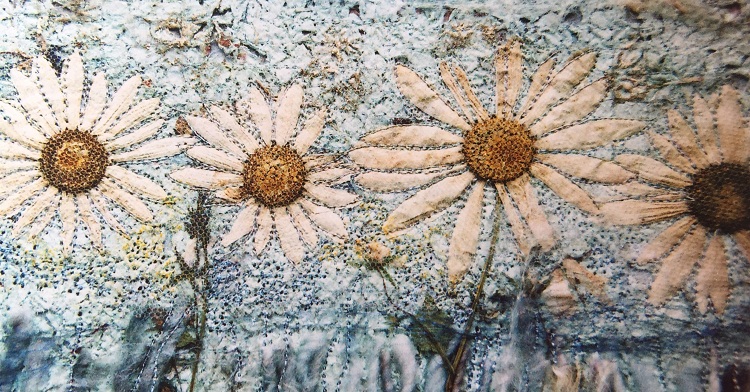
Caroline Hyde-Brown’s fragile and beautiful texile art highlights the detailed craftsmanship of embroidery.
Her work uses a mixture of media materials, but with embroidery as the focus. She produces delicately constructed trees and sews in dried flowers. Her work draws upon nature, reflective light and the seasons. She aims for sustainability, creating artworks using natural dyes, papers and materials.
She trained in Fashion Design, gaining a BTEC in 1992, then completed a BA in Textile Design in Nottingham. She has been a freelance textile artist for over twenty years and has exhibited in the UK and overseas, most notably in Japan.
Teaching and travelling have always been an integral part of her work. Caroline finds great inspiration from the people she teaches and countries she has visited, including Japan, America, Morocco, the Caribbean, France and Greece. In 2002 she was selected to travel and work across the East and West coast of Japan, exhibiting her work alongside the Princess Diana Althorp Collection, as part of a British Craft promotional tour.
More recently she has been able to spend more researching techniques and developing her creative practice.
In this interview, read about her path to becoming a textile artist and how she has carved out a successful freelance career by actively seeking places to exhibit and publish her work. She shares her delight in being given the opportunity to tour Japan with her work. This tour has particularly inspired her recent work exploring the concept of ‘mokume’ (a wood grain effect) and using it in her background stitching.
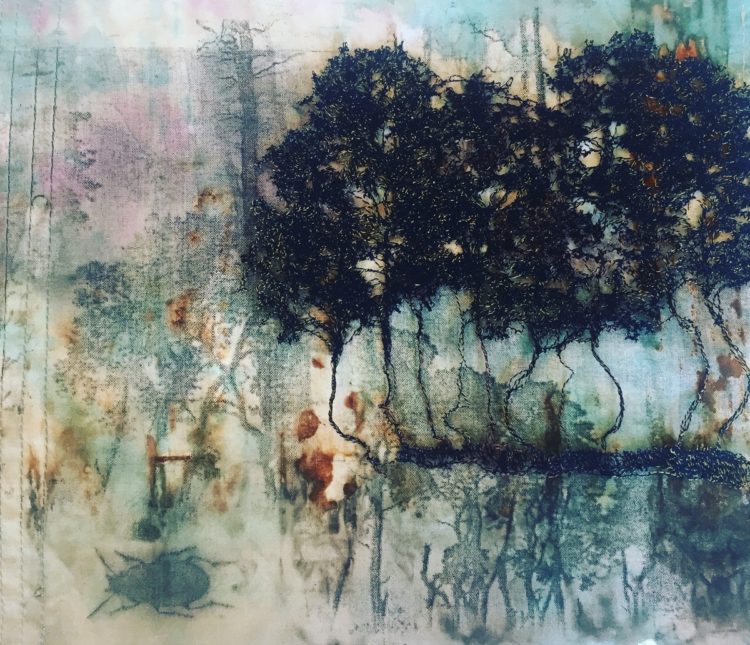
Take the time to study and explore what interests you
TextileArtist.org: What initially attracted you to textiles as a medium? How was your imagination captured?
Caroline Hyde-Brown: I have always been interested in textile art. My first experience of weaving my first fabric was at school. I used this piece of fabric to create a small stool.
I am one of four children and had a childhood full of outdoor play and arts and crafts activities. I was influenced by my grandparents. Both my grandmothers were needlewomen and my grandfather wrote poetry.
I spent most of my childhood drawing and painting or building dens in the wild paddock at the bottom of our garden. We had a derelict donkey shed that I used to sit in. I would listen for hours to the birdsong and waiting for the appearance of the imaginary person I was convinced lived in our overgrown acre of woodland!
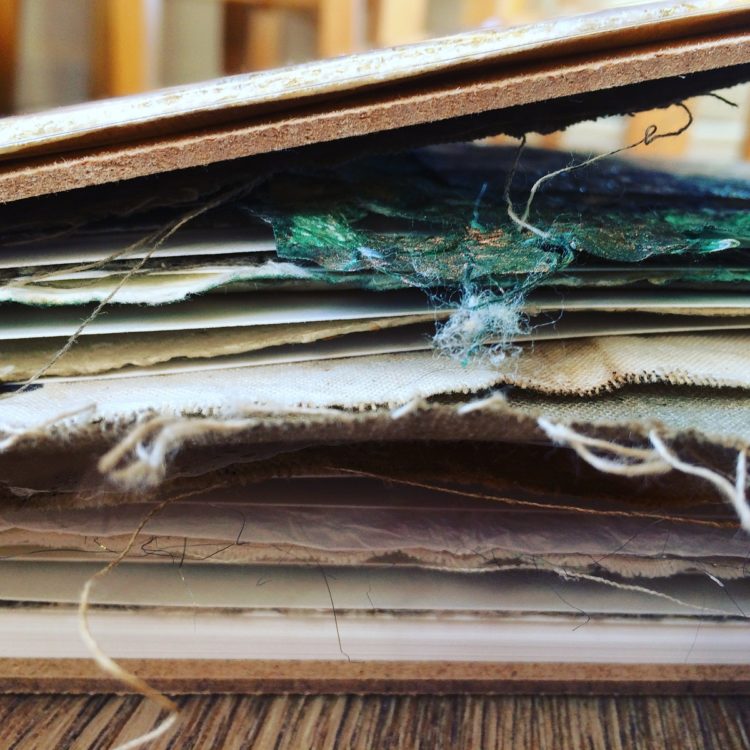
What or who were your early influences and how has your life/upbringing influenced your work?
One of my chosen GCSE subjects was Creative Embroidery. I enjoyed this so much that I went on to study Art at A Level.
After this, I went to Southampton Institute of Higher Education (now Solent University) to complete a BTEC in Fashion Design from 1990-1992.
During my final year, I completed a work experience placement at the studio of Gable Clothing Design Company in Camden, London. My task was to draw and design prints for high street stores such as Dorothy Perkins, Top Shop and The Burton Group. I found this a useful experience as although I enjoyed the work, I realised it was not the industry for me.
My tutor advised me to study textiles. While researching where to go, I went on an organised coach trip to Nottingham. I can remember getting off the coach and knowing that this was where I wanted to study.
I moved there to complete a BA in Textile Design, but there was a big influence on drawing and painting. Also, I found I could specialise in Embroidery. I had a wonderful three years there and was very lucky to be taught by Michael Brennand-Wood and Deborah Gonet. They really inspired me to start my own business.
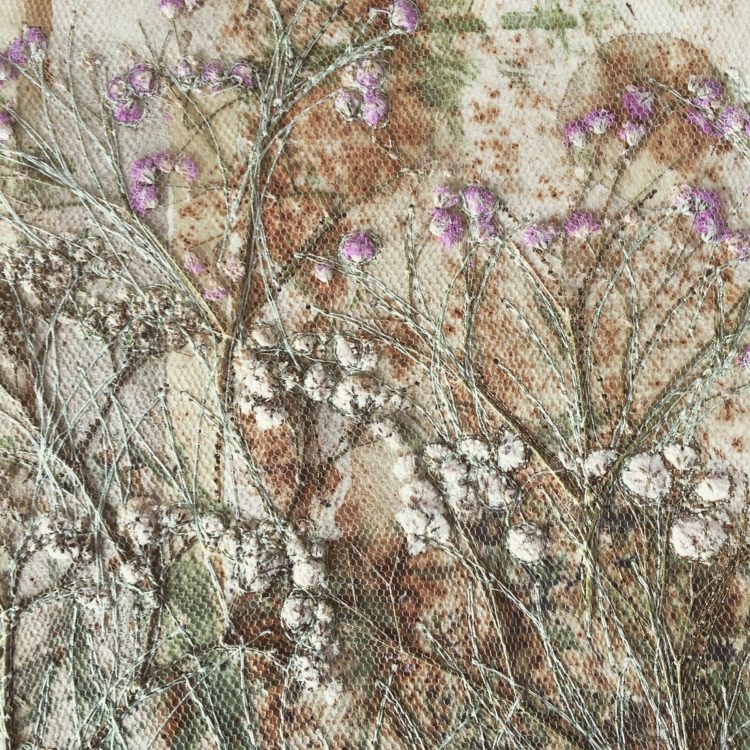
What was your route to becoming an artist?
In 1995 I took part in New Designers exhibition at the Business Design Centre in Islington, showing a range of embroidered fabrics and lighting.
I was delighted to be awarded the Graduate Showcase Award and received a £1500 prize from Jean Draper, who had just been elected to the Executive Committee of The Embroiderers Guild. I can still remember her kind words of encouragement.
The Knitting and Stitching Shows gave me a fantastic boost to my career path in Embroidery, helping me decide to become a freelance Textile Artist.
In 1997 I met Dr Janet Summerton at an Arts Council-led Business Seminar in Winchester. Her training course and advice on working practices and portfolio careers proved very useful to me as I started out in my career.
It took two years to make the gradual move into self-employment. I balanced my income by maintaining a part-time job until I had built up enough business to become a full-time freelancer. I had a very small studio flat in Southampton but set up a boundary between my personal living space and working area. I had a sewing table and a bed that came out of the wall!
I tapped into support networks such as AN, The Arts Council and The Crafts Council. I regularly wrote to various local arts organisations and magazines to publicise my work.
During the first decade of my working life my freelance work took me all over the UK. I developed my own practice and taught art, textiles, weaving and embroidery for many art organisations, community workshops and summer school projects.
I produced framed, embroidered pictures for Liberty, John Lewis and Takashimaya (a Japanese Store). My first meeting with a Buyer at Liberty Flagship Store in Regent Street came about by simply writing a letter to him and including some photographs of my work. Luckily he loved the shape of honesty plant seed pods and most of my pieces at the time had embroidered honesty seed pods in them!
One of my most successful designs was called ‘Whirlwind Romance’ which was a mixed media piece stitched with pressed daisies, mulberry paper and curtain lining tape.
My main source of income was achieved by selling my pieces direct to the general public. Venues such as Hampton Court Flower Show, Craft In Focus, Ramster Garden’s Embroidery and Textile Art Exhibitions, Farnham Maltings and Art in Action have been pivotal in being able to survive the long hours, unpredictability and financial insecurity of being self-employed.
My biggest personal achievement was when I was invited to Japan to work on a British Craft Promotion and travel all along the East and West coast of Japan alongside the Princess Diana Althorpe Memorabilia Collection. I worked in several stores in Tokyo, Osaka and Kyoto promoting my embroidered pieces which included a range of greetings cards, cushions, wall-hangings and pictures. Craft in Japan has a long history and I was treated with the utmost respect and dignity.
I returned to the UK thoroughly enthused and inspired.
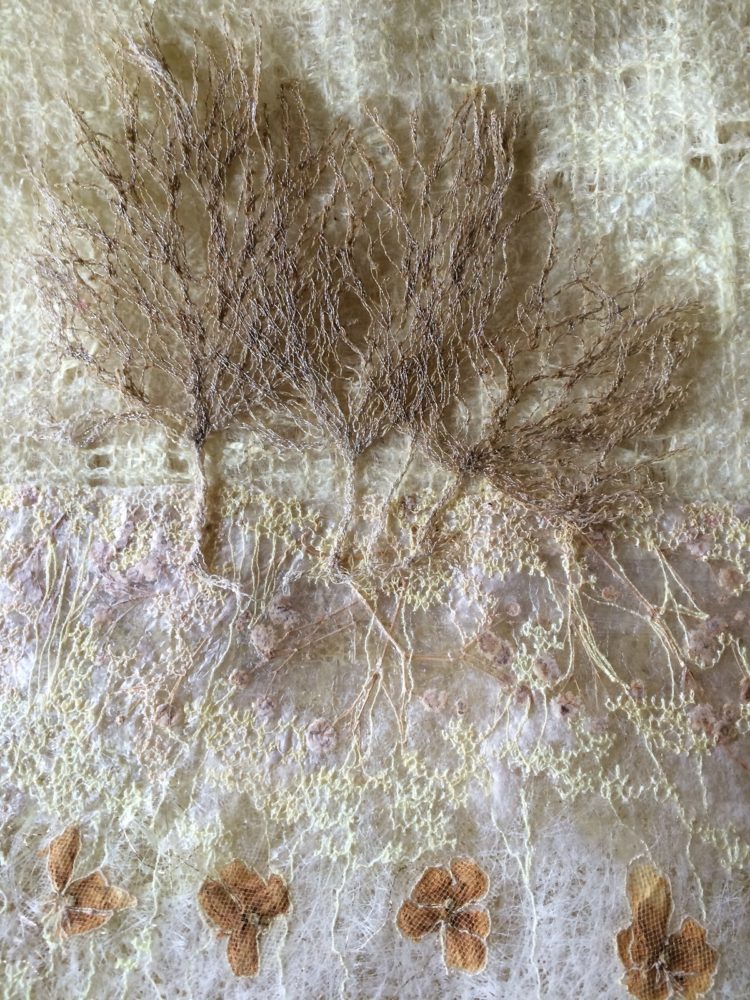
Experiment with materials and embrace ‘happy accidents’ into your work
Tell us about your process from conception to creation
All my pieces are a one-off expression of an initial idea, but interpreting my work has always been tricky for me. I often find it hard to define my market and the commercial value of my pieces but I feel that ‘the what, the how and the why’ of my work should be a simple process.
More often than not I have ‘happy accidents’ while producing my work.
Can knowing how an artwork is made change the way you think about it? It can, but the spontaneity of the process is an important part of my finished pieces.
My own definition of embroidery is ‘a pattern or picture that consists of stitches sewn directly onto any surface’. The physical act of machining or hand embroidery is intrinsic to the work I produce; much like the pages of a book, the stitching tells a story.
I use a variety of media such as paper, natural fibres, thread and paint, but the focus of each piece is always the embroidery. Detail can give so much pleasure and I find that embroidery is a perfect craft for achieving a high level of detail.
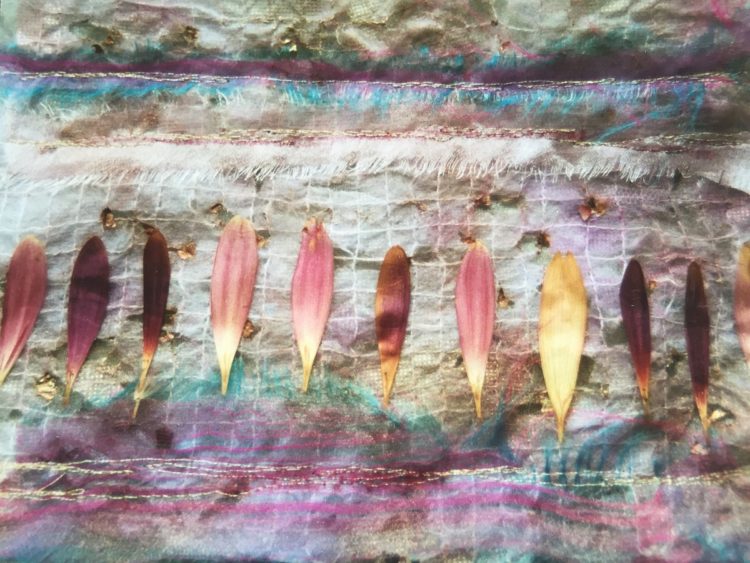
Tell us a bit about your chosen techniques and how you use them
My techniques have varied greatly over the years, as have my background surfaces. I have a real love of all things natural and sustainable.
In the early nineties, I was working to tight deadlines, often producing over twenty pieces every month, in set colour palettes. For this work I favoured Japanese Kozo paper with layers of silk and minimal rows of stitching and dried leaves or flowers. I have always drawn upon the natural world for inspiration. I am fascinated by the changing colours of the seasons and reflective light at different times of the day and year.
My threads are usually Sylko or Drima. I have a lovely collection of vintage wooden cotton reels of beautiful colours, found at antique fairs or flea markets.
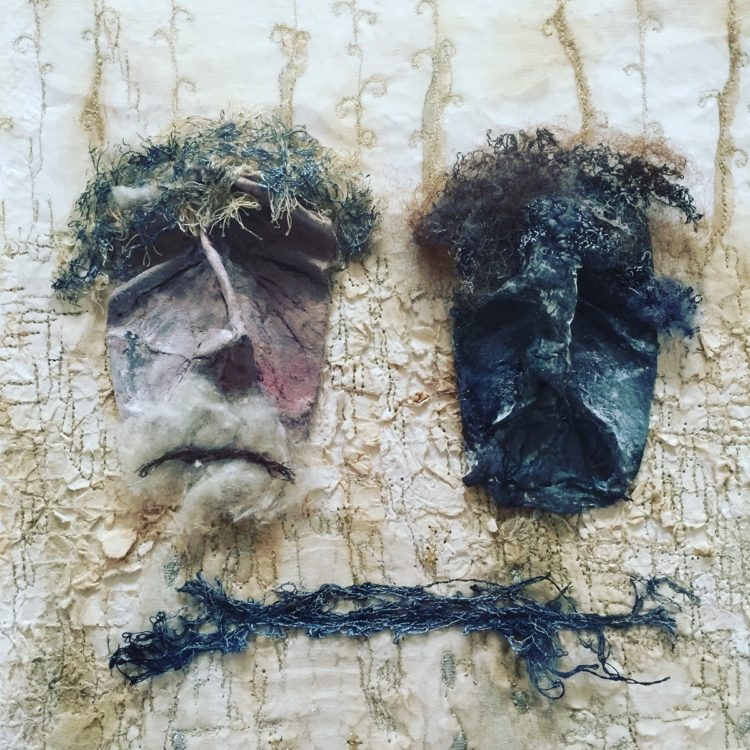
What currently inspires you?
My current work is still inspired by the natural world. I use only natural dyes and pigments and look to nature for patterns and ideas. I’m investigating the Japanese idea of ‘mokume’ (wood grain effect) and how I can incorporate the effect for my background stitching.
I try to maintain a strong sense of global responsibility. The dyes I use are natural. Sustainability is a key element and I like to use simple, delicate natural materials. The pastels I use contain an antioxidant pigment which reflects the light and enables colour fastness.
I invest a substantial amount of time and research into sourcing my materials; many of them come from the developing world. For example, the paper I use is made by people from rural communities who depend on this as their sole source of income. I feel passionately that we should respect the industriousness, skill and talent of these people. We should not be so intent on cost savings, which usually made by buying mass-produced factory products.
I am inspired by my students. I have always viewed myself both as an artist and educator. Quite often I draw upon the energy in a room where I’m teaching, in order to develop my individual practice. I feel recharged and invigorated in the studio after teaching and this is usually when I’m at my most prolific.
I have just qualified as a mental health and well-being first aider so I am keen to promote mindfulness and inclusivity as the key to successful stitching. Layering the surfaces of fabrics, paper, stitch and paint are akin to the layers of our day-to-day living.
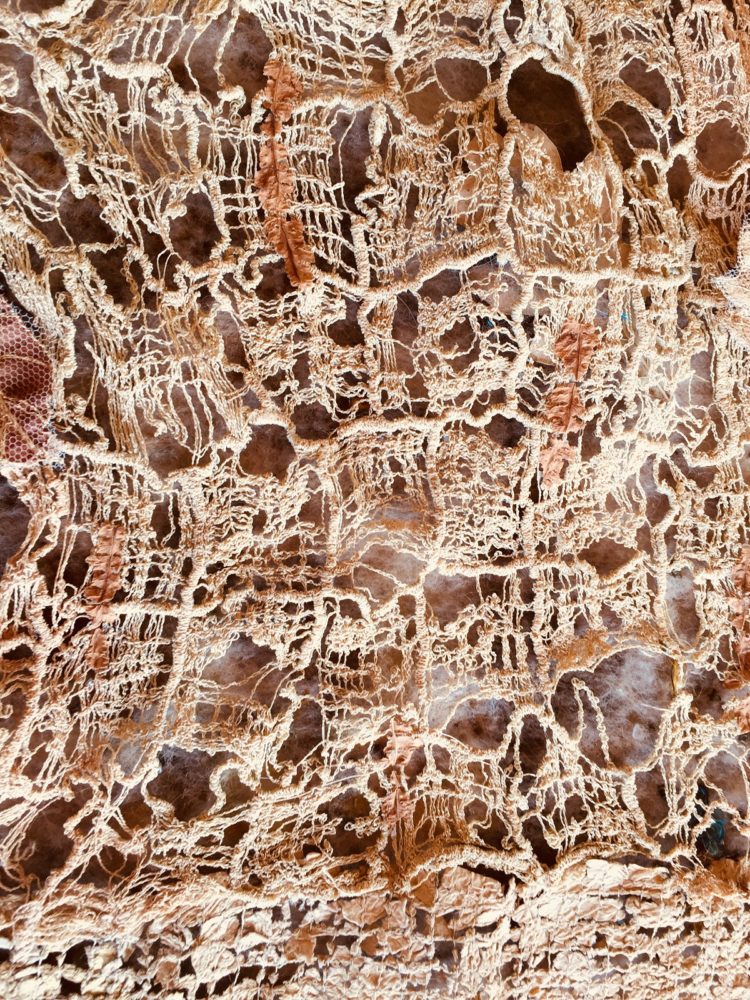
Time to reflect and research is an important part of the creative process
Tell us about a piece of your work that holds particularly fond memories and why?
A particular piece that I’m really fond of is one of my early wall-hangings.
I started making these pieces about twenty years ago as part of a research project called ‘recreation through preservation’. They are about creating something really aged, precious and beautiful; adding in detail and new materials, then reworking it into something new and different. I found this a respectful and caring way of working.
I deliberately used vanilla seed pods to produce evocative smells from a past childhood memory. The drape is achieved by layers of soluble embroidery and the colours are soft and pale.
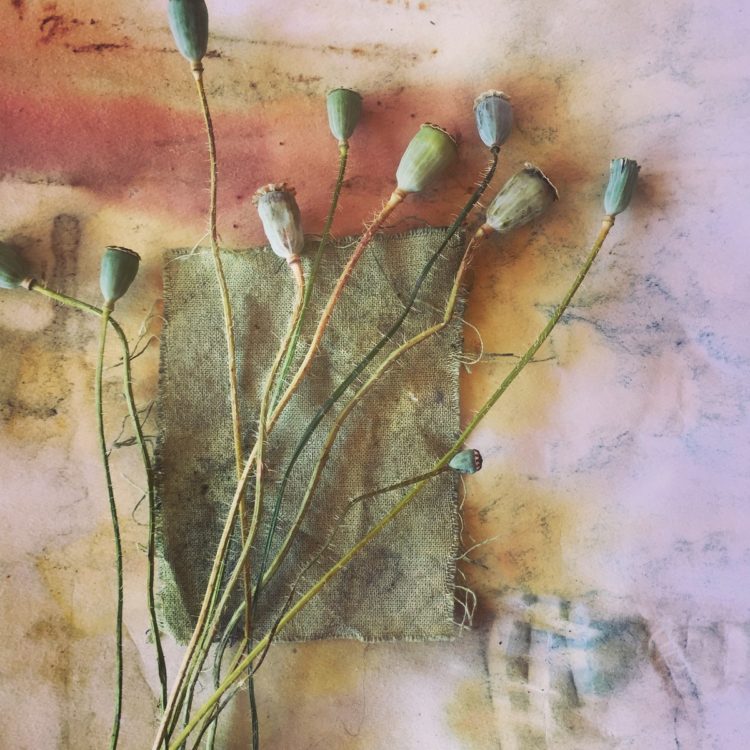
How has your work developed since you began and how do you see it evolving in the future?
My work is constantly evolving. Embroidery is much more central to my work now.
Craftsmanship is about enrichment and complicated detail, but it can also be simply the handling of materials.
My life has changed quite a lot since the early nineties. Since having my daughter I find my time for sewing is a lot more precious. My pieces now take weeks to complete, rather than days. I hand embroider in the evenings a lot more, maybe with a glass of wine to relax and calm my thought processes!
My early pieces were less detailed and more commercially sensitive. I had to produce lots of work quickly to order to earn a living.
Now I spend more time researching and developing techniques, exploring textures, pattern and integrating found objects. Honesty, authenticity and a dedication to the materials you work with takes time. Time to develop your creative process is very important.
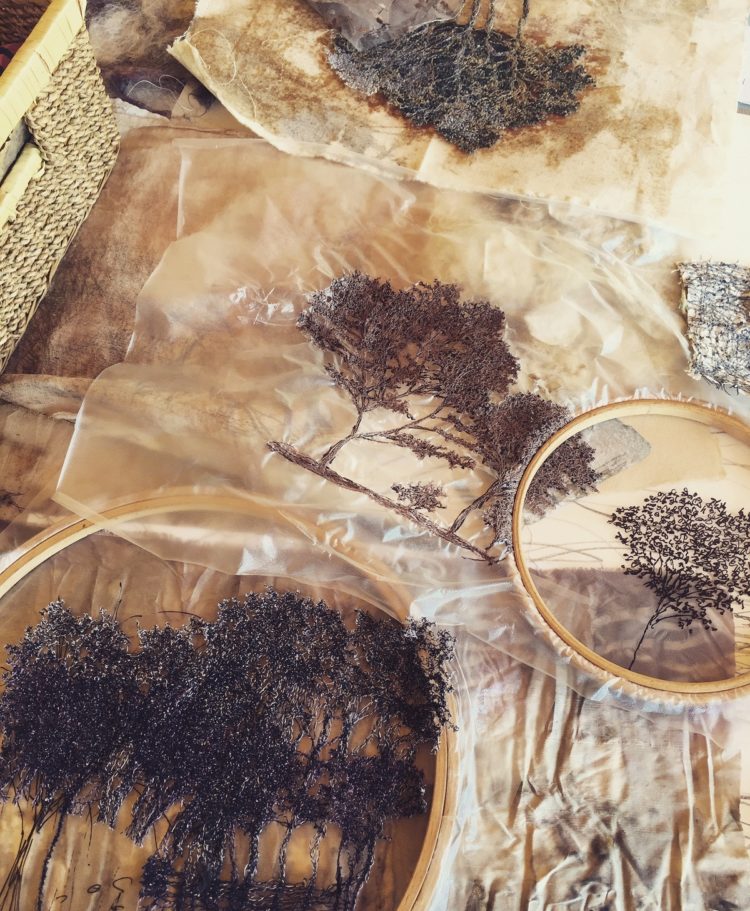
What advice would you give to an aspiring textile artist?
My advice would be simple: “Just do it!”
If you possess that intoxicating need for self-expression and creativity and can develop the rigour and self-discipline, then it will be the right path for you.
Craftsmanship celebrates the handmade, the repetitive and doing something well for its own sake. It lifts you up as well as engaging your viewer.
The Arts are a positive force in society and make us healthier and happier. They make us think, question and collaborate. We need the Arts for a vibrant creative industry and to build an innovative creative workforce.
Embroidery as an art form pushes boundaries. It is in direct contrast to the world we live in today, which is led by immediate imagery, instant gratification and mass production.
Cultivate your creativity, stay committed and gather knowledge daily. After all, a super athlete never got where they are without daily exercise and it’s exactly the same for the creative mind.
For more information visit www.theartofembroidery.co.uk
Has Caroline’s use of natural and hand-made products inspired you? Leave us a comment below.
















Love the textile art I see …very inspiring…❤️
Yes. I am inspired by this article.I don’t embroider but have bought lovely pieces of textile art.Please can you tell me where I can buy such things ad soluble canvas. Would love to make a wall hanging with dried winter debris from the garden or beach.
Thank you.
Thank you for your comments. You can source soluble fabric from many craft stores or online. I personally recommend Solvy, the fine weight.
This is such a fascinating article and I am amazed at what can be done by embroidering. I used to when younger, and I am thinking that perhaps I could reopen this interest. I would have to start small, and then I would rethink this passion.
Caroline is a dear friend & fellow Textile Artist.
Her work is unique & her teaching skill’s are so generous , with much patience.
A workshop in her lovely Studio is a very pleasant experience
This article is truly inspirational. Using nature and natural resources within embroidery is incredible.
Thanks for sharing. I really like and appreciate your work. The points you have mentioned in this article are useful.
Lovely article. Absolutely yes it is inspiring. I am a textile artist too and I use unimportant craft fabrics (rags or excess unsold stock) for creating soft furnishings and textile art. I use embroidery and painting and go with the flow listening to what the background fabric has to say to me!.
I will try source soluble canvas fabric. Thank you so much. Any way to get in touch with Caroline Hyde-Brown, if I want some feedback on my work?
Sangita Khalsa
India
Delightful and informative article. Thankyoy
What an inspiring and informative article,
thank you.
I was enjoying using soluble fabric on my college course before COVID hit.
Working at home I haven’t found a good supplier so will look at solvy as you recommend.
Thank you for the chance to look at your beautiful work.
Anne Piper
I have found your article very inspirational on a number of levels. In particular the research into and obtaining materials from sustainable and local sources. Thank you for setting this example.
Thank you for sharing your creative journey. It is most inspiring. I loved your work it is really beautiful.
So inspiring I am going to experiment